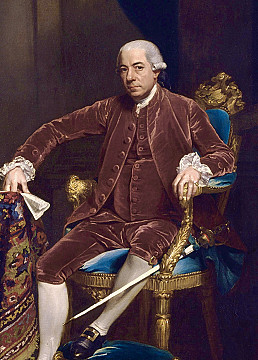Henry Laurens (1724-1792)
Merchant of Charleston; 5th President of the Continental Congress
He was born in Charleston to Huguenot parents. After a basic education, he began his business career in London. Returning home in 1747 he went into partnership with George Austin exporting rice, indigo, deerskins, and naval stores to Britain, Europe, and the West Indies. Their vessels returned with wine, textiles, rum, sugar, and slaves. Their firm, Austin & Laurens, was one of the five largest slave-trading firms in Colonial South Carolina, selling over 10,000 African slaves between 1749 and 1762 alone.
He bought four plantations in South Carolina (Mepkin, Wambaw, Wrights Savannah, and Mount Tacitus) and two in Georgia (Broughton Island and New Hope), and he was soon one of the wealthiest men in America. Nonetheless, in 1776 he wrote, “I abhor slavery,” yet he still owned 298 slaves as late as 1790. Despite these contradictions, he understood the harm that slavery posed to both races and predicted that it would end in bloodshed, but still no-one listened. In 1777, he quickly established himself as an active and respected member of the Continental Congress and that November he succeeded John Hancock as President during one of the most trying times in American history. In 1779, he was appointed U.S. Minister to the Netherlands but was captured at sea by the British and imprisoned in the Tower of London (later exchanged for Lord Cornwallis). He married Eleanor, daughter of Elias Ball, and four (listed) of their twelve children lived to adulthood.
He bought four plantations in South Carolina (Mepkin, Wambaw, Wrights Savannah, and Mount Tacitus) and two in Georgia (Broughton Island and New Hope), and he was soon one of the wealthiest men in America. Nonetheless, in 1776 he wrote, “I abhor slavery,” yet he still owned 298 slaves as late as 1790. Despite these contradictions, he understood the harm that slavery posed to both races and predicted that it would end in bloodshed, but still no-one listened. In 1777, he quickly established himself as an active and respected member of the Continental Congress and that November he succeeded John Hancock as President during one of the most trying times in American history. In 1779, he was appointed U.S. Minister to the Netherlands but was captured at sea by the British and imprisoned in the Tower of London (later exchanged for Lord Cornwallis). He married Eleanor, daughter of Elias Ball, and four (listed) of their twelve children lived to adulthood.




